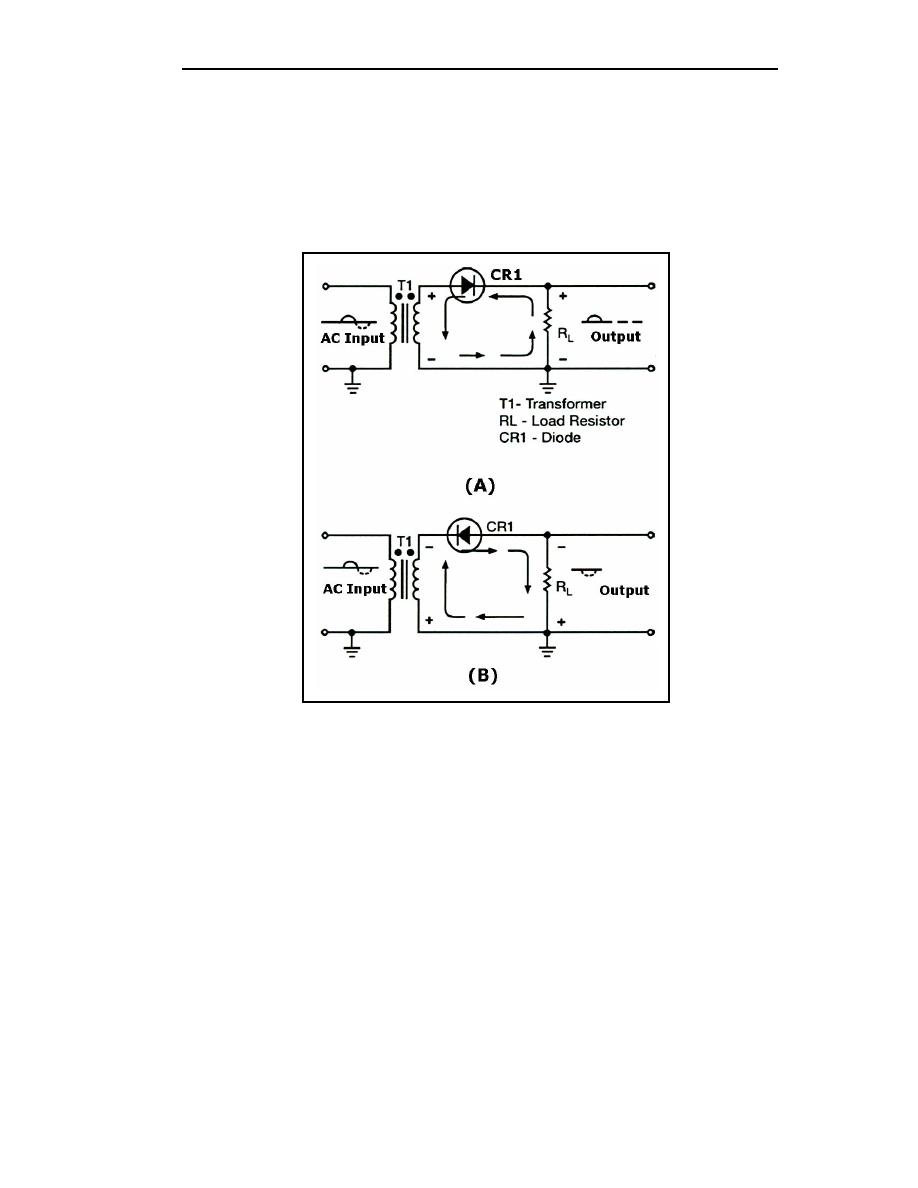
TC 9-62
1-80. The transformer (T1) in Figure 1-21 provides the AC input to the circuit; the diode
purposes:
It limits the amount of current flow in the circuit to a safe level.
It develops the output signal due to the current flow through it.
Figure 1-21. Simple Half-Wave Rectifier
1-81. Before describing how this circuit operates, you must know the definition of the
word "load" as it applies to power supplies. Load is defined as any device that draws
current. A device that draws little current is considered a light load while a device that
draws a large amount of current is a heavy load. Remember that when we speak of "load,"
we are speaking about the device that draws current from the power source. This device
may be a simple resistor or one or more complicated electronic circuits.
1-82. During the positive half-cycle of the input signal (solid line) (see Figure 1-21, view
(A)), the top of the transformer is positive with respect to ground. The dots on the
transformer indicate points of the same polarity. With this condition, the diode is forward
biased, the depletion region is narrow, the resistance of the diode is low, and current flows
through the circuit in the direction of the solid lines. When this current flows through the
load resistor, it develops a negative to positive voltage drop across it that appears as a
positive voltage at the output terminal.
1-83. When the AC input goes in a negative direction, the top of the transformer
becomes negative and the diode becomes reverse biased. With reverse bias applied to the
diode, the depletion region increases, the resistance of the diode is high, and minimum
1-24
TC 9-62
23 June 2005


 Previous Page
Previous Page
